Technoir by GimpInBlack
| 1 | Exposition |
| 2 | Composition |
| 3 | Instigation |
| 4 | Transmission |
Exposition
Original SA post
Well, I've got the
Tron: Legacy
soundtrack queued up on Spotify, a plate of horrifyingly post-industrial processed cheese-like food substance, and a Canadian beer (the "Japanese corps rule the world" meme is so passe), so I guess it's time to talk about...
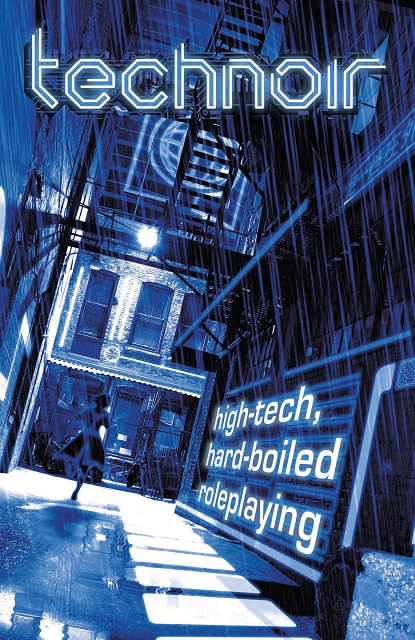
Playing it safe isn’t working anymore; you’re not going to get out of this clean. You have illicit tech and the talent to use it. Time to go shake the city and see what falls out. You’ll get hurt, sure, but what kind of pain will you deal out?
TechNoir
is a high-tech, hard-boiled RPG designed and written by Jeremy Keller. The project was successfully Kickstarted in July 2011 with a respectable $24,255 pledged on an initial $2,500 goal. The extra money was supposed to unlock three stretch goals:
MechNoir
, adding rules for giant robots,
HexNoir
, adding rules for a Shadowrun-style "cyberpunk with magic" game, and
MoreNoir
, a toolkit guide to creating your own expansions in the vein of
MechNoir
and
HexNoir
. Unfortunately, while
MechNoir
was finally released in August 2012,
HexNoir
and
MoreNoir
never materialized, with the last update from the author back in June of last year, assuring us that work on
HexNoir
hadn't been abandoned, but

However! We're not going to let that deter us from enjoying the hell out of a really very good game. We'll be covering the entire corebook, plus MechNoir and the bonus Transmissions (more on those later) released as part of the Kickstarter campaign.
The first thing I want to point out, before we start getting into any specifics, is that
goddamn
this book is gorgeous. Keller is a graphic artist and layout designer by trade--TradGames goons might know his layout work from
Marvel Heroic Roleplaying
--and it really shows in how cleanly the book is laid out. Every page is self-contained, all the rules interactions are well-diagrammed, and whenever it starts explaining game mechanics, each rule is presented on the left-hand page with examples of the rule in use on the facing page. This makes it really easy to quickly find any reference you might need during play, and unless you need reminding about, say, the entire action-resolution system, it means you won't have to flip for three or four pages to find the one relevant section under a sprawling subheader. It's just excellent visual design, and anybody thinking about publishing a game book would do well to check out TechNoir. (Spoiler alert: I'm going to gush similarly about layout when we get to
Hollowpoint
later on.)
The downside of this clean layout is that the book has very little art. Discounting diagrams of gameplay actions, the only art in
TechNoir
is the full-page chapter headers (which are very slick bits of urban photography processed and retouched to have a futuristic, augmented-reality look; I'll post a few of my favorites as we go), a couple of smaller cityscape images, and some simple orthographic line-art of various bits of equipment. Still, that's hardly a game-breaker, and in fact I'd say it makes a lot of sense given some of the game's design philosophies. So let's get started.
code:
[34.07.20.13.21.15.004] SPECS operating system v4.033.975 intiating.
[34.07.20.13.21.15.056] Visual recognizers on-line.
[34.07.20.13.21.15.132] Logging in to nearest link-point.
[34.07.20.13.21.15.412] Constructing identity avatar.
[34.07.20.13.21.15.689] Initiating overlay render.
[34.07.20.13.21.15.943] Logging in to your bankco account.
[34.07.20.13.21.15.968] Your account balance is 0.00325 Kreds.
[34.07.20.13.21.16.014] Negotiating derma-link protocols.
[34.07.20.13.21.16.245] Overlay render complete.
[34.07.20.13.21.16.482] Welcome to the Interface...TechNoir posted:
TECHNOLOGY
The city streets buzz with illusory neon lines, animated, playing out just over the grimy surface. The Internet’s gotten too big for any screen, so they feed it right to your eyeballs. You see it everywhere. It spills out onto the streets. It guides self-driving cars through automated intersections. It’s the cartoon some kid wears to school. It’s your personal shopper. We wear the hardware that runs it: in the glasses that let you see it, the chip sewn into your jeans, the electronics of your prosthetic leg. They’re all linked together in a living, thrumming network that spans the world. They call it the Interface. We call it the Big Lie.
ENVIRONMENT
Under all those pretty graphics, the city is dirtier than ever. Soot floats in from the deregulated coal plant; it cakes over everything. The weather is less predictable than ever. Wind and rain, then a drought, then a blizzard, then a hurricane. Hell is swelling up around us and we don’t seem to care. We’ll burn those carbon fuels as long as the corporate-sponsored wars keep winning what’s left of them. We’ll do it until we choke on the smog.
SOCIETY
The rich are opulent. The poor are decrepit. There isn’t much left between. Record numbers of the city’s population are unemployed. When robotics do the blue-collar jobs and software handles the white-collar ones, what’s a flesh body to do? Join a corporate army and get shipped off overseas. Send the paycheck home so the family can buy useless, corporate crap or lose it to the rampant runs of criminals.
Criminals like you.
And that's the entirety of what we get as far as world-building or "setting info." The various Transmissions, which we'll talk about a little later on but are basically prepackaged settings and plot-development tools, put their own twists on these three core aspects of the setting, but other than that it's left entirely up to the table to define. Not only does this significantly reduce the required buy-in from everybody involved, it really lets you make a dystopian future that hits on all the things that make you uneasy. In the Acknowledgements at the end of the book, Keller talks about how his vision of the setting is "how horrible it could be if the political philosophies I disagree with strengthened their grip on society," which really is the hallmark of good, dystopian sci-fi. If your table is more freaked out by, say, the omnipresence of government surveillance than the global influence of megacorporations, you can play up that sense of paranoia and always being watched. If censorship and the suppression of journalism is your outrage, well, we have always been at war with EastAsia.
That's also why I'm not too bothered by the relative paucity of art in the book. Rather than forcing a "futuristic" aesthetic on us that will be dated as hell in a couple of years, TechNoir gives us some glimpses of the cities and the Interface, but leaves the day-to-day to our own aesthetics.
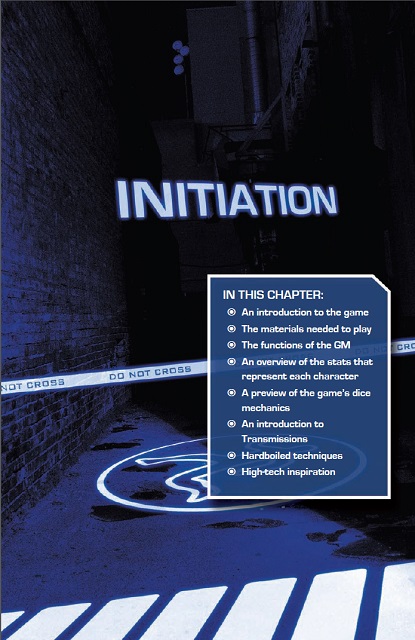
I love the idea that AR displays are so ubiquitous that even the crime scene tape is part of your Google Glass display.
So, to begin with, you'll need dice. Just regular six-sided dice, but you'll need them in three colors; about five per color per player should do. The book assumes you'll be using white, black, and red, and we'll stick with that convention for the writeup. Character sheets, Transmissions, and a Player's Guide that includes a summary of the player-centric rules, are obviously also helpful and can be found at TechNoirRPG.com. You'll also need a blank piece of paper for your plot map, which we'll be digging into later. I recommend either a tablet with some sort of flowchart-making app, or if you're rolling old-school at least a legal-size sheet of paper. Unless your handwriting is really tiny, that is.
The entire book is written as though the game is talking to the GM--when the book says "you do X" or "you choose Y," it's always referring to the GM. As GM, it's your job to portray a cruel, uncaring world of powerful criminal syndicates, greedy megacorporations, and hopelessly corrupt governments, but populate it with NPCs who care about something, who have their own agendas and agency. Your job is also to beat the ever-loving fuck out of your players. In the grand tradition of hard-boiled fiction, the protagonists aren't going to solve their ex-partner's murder and expose Senator Benslimane's connection to the DRMDMA cartel without being dragged into a back room and worked over with a tire iron. PCs are built to take punishment, so don't be afraid to dish it out. You're not their enemy, but it is your job to challenge them. Put NPCs in opposition to their goals, throw obstacles in their path--but then sit back and enjoy seeing how they overcome those obstacles and see where the story goes from there.
Characters in TechNoir are defined by four different types of traits: Verbs are your basic skills, the way you interact with the world. Everybody has the same 9 verbs, and they're rated from 1 to 5. These are what you'll be rolling when you try to do stuff. The verbs are Coax, Detect, Fight, Hack, Move,
Operate, Prowl, Shoot , and Treat
Adjectives describe the character and tell you how she's unique. Maybe she's fast or brawny or goddamn terrifying. Adjectives aren't rated like Verbs; you either have one or you don't. They can, however, be positive or negative, and have various degrees of permanency. If Verbs are the engine that drives gameplay, adjectives are the work that engine puts out. Creating, manipulating, and removing adjectives is the entirety of the game system--and yes, dead counts as an adjective.
Objects are a character's stuff. TechNoir doesn't care about inventory-related minutia, but come on, it's the future. Everybody likes at least a little bit of high-tech stuff. Objects have one or more tags, which are kind of like adjectives in that they describe what the object can do and help you out on actions.
Finally, Connections are the characters, both PC and NPC, that a protagonist knows and can lean on for information and favors. Only PCs have connections, and they can be a game-changer--but rely on a contact too much and you might find out he sold you up the river a long time ago.
Technically, PCs have a fifth type of stat, training programs , but they're really just an artifact of character creation and all they really do is help you determine the character's verbs and adjectives .
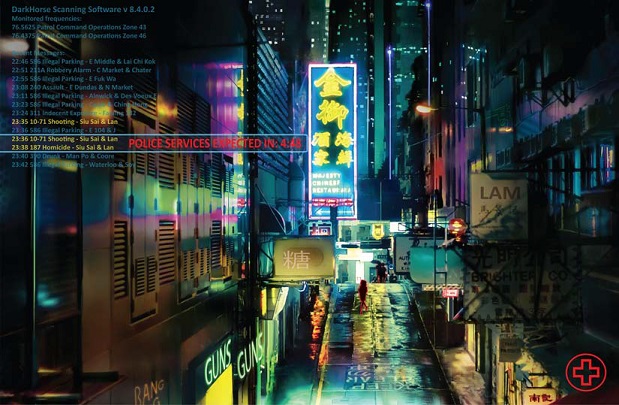
Three illegal parking citations in under an hour? This is a bad neighborhood!
Hey now, what's this? do we actually get an overview of the game rules before we're thrown headlong into character creation? We do! Like we already learned, TechNoir uses three colors of dice: white dice are action dice . They represent training and innate skill--when you try to do something, you'll roll a number of action dice equal to your rating in the relevant verb: Coax to fast-talk somebody, Hack to infiltrate their network, etc.
Black dice are push dice . They represent extra effort or a technological edge. You've only got a limited pool of these, but you can add one to your roll for every relevant adjective, object, or tag you've got. After the roll, you can spend them to make the action more effective. Much like Fate Points in Fate games, push dice are the main driver of the economy of TechNoir , and we'll cover what a great system this is in a later post.
Red dice are hurt dice . They represent injuries, inconveniences, and all the other little distractions that make you less effective. For every negative adjective that might hinder your action, you add a hurt die to your roll.
Once you've got all your dice assembled, you roll them. First things first, look at your hurt dice. If any of them are showing the same number as any of your action or push dice , those dice go away. Gather up all your hurt dice , plus any matching action or push dice, and put them aside. Now look at your highest-showing die remaining: that's your action's result. If you have more than one die tied for highest, add ".1" to your result. So, for example, a single 5 gives you a result of 5, three 6s gives you 6.1. If your result is higher than your target's rating in the relevant verb , congratulations! You can put a new adjective, either positive or negative, on the target. If you have any push dice , you can spend them now to make that adjective more severe and/or stick around longer.
Obviously that's a very bare overview of the rules, and we'll get into more detail later, but I really like this system. By setting the difficulty as one of the target's verbs , it really reinforces one of the game's core tenets: you're acting against people , not the world. You don't roll to hack the corrupt senator's office computer, you roll to put all his dirty laundry out there on the net and make him scandalized. You don't roll to spot the spent shell casing at the murder scene, you roll when you show it to the Senator's wife to make her implicated . Also, having the extra dice upgrade your result from X to X.1 is just a lovely little sci-fi touch.

I've already talked a little bit about Transmissions, but the game gives them a little more detail here. A Transmission is basically a bite-size chunk of setting and potential plot, each centered on a particular city. A Transmission has 36 "plot nodes" that can be used to drive a story, divided up into six categories: connections (NPCs who are "plugged in" to what's going on, they'll be the PCs' primary avenues of investigation), events, factions, locations, objects , and threats . As GM, you'll use these nodes to build your plot map and figure out what the hell is actually going on. Transmissions are designed to give you about 2-3 sessions worth of story apiece, and you can chain them together if, say, you want the mystery of who tried to blow up the Kilimanjaro Beanstalk to stretch all the way to Minneapolis. TechNoir includes three Transmissions in the book: the Los Angeles Sprawl (pretty much your standard Blade Runner/Snowcrash cyberpunk archetype), Singapore Sling (Singapore has built a huge rail gun to launch cargo into orbit; crime and corruption abounds), and the Kilimanjaro Ring (a city built around the circumference of Mt. Kilimanjaro and the site of a much-delayed and overbudget space elevator construction project). Also released as part of the Kickstarter campaign were Hong Kong (now so polluted that most of the populace lives underground; only the very rich with very expensive cyberorgans can spend more than a few minutes outside without protection) and the Twin Cities Metroplex (bleeding-edge cybertech with a dash of Coen Brothers-esque Midwestern crime). They're all cool, though I kind of wish either Singapore Sling or the Kilimanjaro Ring had been replaced by something else in the core book, as they hit some pretty similar notes.
The phrase "high-tech, hard-boiled RPG" is TechNoir's tagline, so we naturally close out Chapter Two with some discussion of what that means. The protagonists of hard-boiled fiction are active investigators: they have a finely-honed network of stoolies, snitches, and rat-bastard motherfuckers. Lean on the right people and they'll tell you everything you need to know. When a hard-boiled protagonist finds a mysterious shell casing at a murder scene, he doesn't take it to the ballistics lab and try to find a match in the NCIC database, he dangles a scumbag out the window until the rat spills that Johnny the Shiv carries a gun in that caliber. Then he goes and kicks in Johnny the Shiv's front door, because intimidating people makes them nervous, and nervous people slip up. Invisible cat-burglars and hackers so good they're ghosts in the machine are not good protagonists in this game: if nobody knows you're snooping around, nobody knows to panic and send a couple of meatheaded palookas around to your coffin apartment and teach you the error of your ways. And if no meatheaded palookas drop by to rough you up, you're never gonna find the matchbook in the dumb one's pocket that ties the whole case together. You've got to think laterally--the kind of shit you're up against you don't have a hope of taking down in a straight-up fight. You've got to come at them sideways, go for the joints and the nerve clusters, fight dirty and outwit the bastards. And for God's sake, when you find yourself between a rock and a hard place, have the good sense to play them against each other.
Of course, all that owes a great deal of debt to the classics of hard-boiled fiction: Your Chandler and Hammett. Their detectives were proactive because they had to be--DNA testing wasn't a thing yet, ballistic fingerprinting, while possible, didn't have the benefit of national databases, stuff like that. TechNoir protagonists have a lot more tools at their disposal, but you've got to take care not to let the tools become the story. Sci-fi doodads let our protagonists ply the techniques of hard-boiled fiction faster and along new vectors, but they're still the same techniques. Maybe instead of dangling the rat out a window you call him up on the Interface and tell him you're one click away from forwarding those photos on to Boss Meoki--you know, those ones of him and the boss's husband? Either way, you're leaning on a stoolie to get the info you need.
Tech is also very open-ended; it's largely up to you to interpret and extrapolate what tags mean and what objects can do. Like, a lot of cars have spheels. What's that? All the book tells you is it means the car has spherical wheels. So does that mean cars can drive in any direction? Yeah, probably. How are the spheels attached to the car? Are they maybe held in place but allowed to rotate freely by an electromagnetic field? Sounds plausible. So I can hack the car's on-board computer and cut the power to the magnet, right? Sounds like a hell of a way to end a chase scene to me. Sci-fi tech is a storytelling tool, not a way to shortcut stories.
Okay, that's a hell of a lot of words about tone and feel and basic mechanics. Let's start putting this into action and make a few characters. After the long-as-fuck six example characters from the Aletheia write-up, I'm going to follow TechNoir's lead and make three sample characters, chosen by simple expedient of how long it takes me to find a piece of character art in GIS:
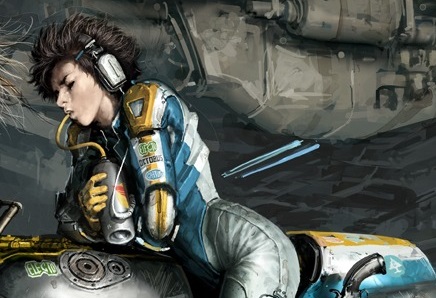
Image credit: Puppeteer Lee
Lemon Curdistan posted:
Sophie is a bicycle courier who moonlights as a grifter in Hitown nightclubs. She's good at talking and running/cycling, but not at fighting - what she can't solve by fast-talking she "solves" by getting the hell out of dodge.
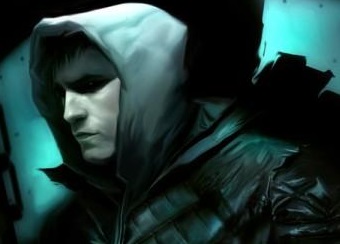
Image credit: Alleged Neuromancer concept art found at ComicBookMovie.com
Mr. Maltose posted:
Oh man, make a Peter Riviera. An artist with a bad habit of theft and a tendency to hurt more than necessary. For the art, you understand.

Image credit: Shutterstock.com
GimpInBlack posted:
An avenging street samurai wandering the Sprawl with his deadly Hanzo steel.
You're goddamn right.
So, character creation is pretty straightforward. To start with, you pick three training programs that represent what you know how to do. Maybe you learned it at a trade school, maybe you learned it on THE STREETS , or hell, maybe it's just an educational memeplex software download you plugged into your headjack because you thought it would be cool to know how to fly a helicopter. Anyways, each training program has three verbs and three adjectives associated with it. Each time you pick a training program, increase your rating in all three verbs by one and pick one of the associated adjectives (or pick from the giant list of general adjectives in a few pages, or, hell, just make up your own). You can choose the same program twice if you want, which suggests you're not only trained but you've been doing that job for years. Oh, and everybody starts with one point in all nine verbs for free.
The nine training programs are Bodyguard, Courier, Criminal, Doctor, Engineer, Escort, Investigator, Pilot, and Soldier.
Example Characters

Courier is an obvious choice for Sophie, giving her Fight, Move, and Prowl. She bumps each of those ratings up to 2 and settles on fast as her adjective. Lemon wants her to be good at the bike-riding, not so much the fighting, so for her second program she takes Pilot which gives her a point each of Detect, Operate, and Shoot. Operate , if you were wondering, covers driving/flying as well as piloting drones or using other kinds of remote equipment. Anyways, we want Sophie to be the classic "nobody can touch me behind the wheel" type, so ace seems like a good fit for her second adjective. Finally, looking at our options for a final program, we'll go with Doctor. Seems like crazy stunt-riding bike messengers would get bashed up a lot, so some first aid training makes sense. Doctor also gives her another point each of Detect and Operate in addition to Treat , bringing her rating in driving and noticing stuff up to a respectable 3 each. Diving through crosstown traffic all day means Sophie needs nerves of steel, and steady from the Doctor's suggested adjectives seems to fit.

Peter's definitely a career Criminal , so straight away we're going for that one twice. That gives him two points, for a total of 3, in Hack, Prowl, and Shoot. Criminal's suggested adjectives don't really fit, but artistic is on the big list of general adjectives later in the chapter, and we'll go homegrown with psychotic as our second choice. We want Peter to be something of a computer genius, so we'll go with Engineer for his final program, giving him Coax, Hack, and Operate . Obsessive seems like a good adjective.

Hattori (real name: Prescott J. Flannigan) grew up watching an Assamese dub of Ghost Dog: The Way of the Samurai and reading Atlanta Cutlery catalogues. His mighty Hanzo steel is ever in service to his daimyo. Despite the fact that he's an insufferable twit, he's quite good at his job, taking Bodyguard twice (for two points of Coax, Fight, and Treat, plus the adjectives alert and honorable as adjectives ) and Soldier once for a point each of Fight , Move, and Shoot and the adjective geeky .
Now, while the players were doing all that, the GM should have been picking out a Transmission, because at this point it's time for each player to pick three connections from the Transmission. These will be the character's main sources of information once the game starts, and they can also provide various favors , like fencing stolen goods or selling you drugs. The available favors are:
-
Chop
(buy or sell a vehicle at an 8 Kred discount, but it has the
Stolen
tag)
-
Date
(Get you access to a function or event as long as you go with them)
-
Deal
(sell you drugs that get you high and let you treat all your
pain dice
as
action dice
for one roll)
-
Fence
(buy any kind of bulk stolen merchandise for 5 Kreds)
-
Fix
(sell you up to three
objects
at a 2 Kred discount, but adds the
stolen
tag to all of them)
-
Ride
(transport you and/or some friends and/or illicit goods anywhere within or just outside the city)
-
Shark
(loan you 10 Kreds)
-
Splice
(install one piece of cybergear at no charge).
Multiple characters can have the same connection, but each connection can only provide two favors total during character creation. Favors will come into play when we start gearing up our characters, notably chop, deal, fix, shark, and splice . For our example, we'll use the Twin Cities Metroplex Transmission, because why not?
Example Characters

Looking over the six available connections in the Metroplex, we decide that Sophie probably does some... less-than-legal jobs when the rent money's not quite there, so she picks Arma Winn, owner of a dodgy pawn shop in East St. Paul. Arma can provide the favors fence, ride , or shark . She also knows Kallico North, a local singer on the verge of a big break ( date, ride ), and since bike couriers get shitty health insurance she knows Dok Petrov, a cybersurgeon with a body shop in the Minneapolis Skyway ( fix [cybernetics only], splice ).

Peter is a bad, bad man. He's close buddies with Adrienne Chao, heiress of the Siamese Syndicate ( date, shark ), January Jade, a smuggler and gun runner in Lowertown St. Paul ( deal, fix [armor, guns, and weapons only]), and Sophie's pawnshop buddy Arma Winn.

Hattori, naturally, must swear fealty to a daimyo , so he knows Adrienne Chao. He also knows Pen Re, a cyberengineer working on a top-secret project ( date, splice) and as Adrienne's chief enforcer has had dealings with January Jade as well.
Once connections are established (you can write down other PCs' names too, if you want to say you know them), it's time to pick relationship adjectives . Relationship adjectives are a special case: if you're acting against the relationship, they count as negative (and thus contribute pain dice ). If you're supporting or helping the relationship, they count as positive (and thus can contribute push dice ). These you don't get to make up; you draw them from a list of nine defined adjectives . Also, once an adjective is chosen, mark it off--nobody else can take it. Yes, that means if you have more than 3 players some will end up without relationship adjectives , and if players write down other PCs they won't have an adjective for all their connections . That's fine, it just means the relationship is strictly professional. Relationship adjectives can be created or even replaced by events during play.
Example Characters

Sophie settles on dependent for her relationship with Arma Winn--we're almost certainly going to call on that shark favor in a few minutes. She's trusting toward Kallico North--they've been dating for a few months now. Finally, she's affectionate toward Dok Petrov--the surly old coot reminds her of her uncle.

Peter is lustful toward Adrienne Chao. Not in a creepy sexual way. In a creepy "I want to make your face into an artful collage" way. He's obsessive with January Jade, on account of he gets his fixes from her. Oddly, he's very protective toward Arma Winn. Nobody's quite sure why.

Hattori is, of course, loyal toward his daimyo Adrienne Chao. He's respectful toward Pen Re, the man who turned his body into a killing tool. He's sympathetic toward January Jade--their work puts them at loggerheads more often than not, but he understands how hard it is to be ronin in this world.
We're almost done! Last real step is to buy equipment. Everybody gets 10 Kreds to buy stuff. Since most equipment costs one Kred per tag and cybernetics cost an extra 5 Kreds to implant, 10 Kreds doesn't go super far. That's where those favors come in. Each contact can provide a maximum of two favors during this step--but doing so makes them more closely tied to the plot and thus more likely to double-cross you later. But we'll talk about that next update.
I'm not going to go into a lot of detail on equipment or tags --it's a pretty sparse list gear-wise and most tags are purely flavor. A couple of things worth noting, though: if you want to be able to access the Interface, you need bare minimum something with the linked (to connect to it), display (to see it), and gesture input (to control it) tags. Luckily, there's a doodad called SPECS that's basically Google Glass that covers all that.
Networked devices have one of three tags : linked (connected to the Interface), derma-linked (a personal network carried by skin conduction), and nerve-linked (pretty much cybernetics). For two devices to connect, they have to share a tag , and you can make "routers" by giving objects two different network tags .
Some tags trump other tags , meaning you can't use the trumped tag to defend against the trumping one. If you're still using gesture-input to connect to the Interface, you're just not fast enough to mount a defense against a dude who controls the Internet with his brain.
Example Characters

Bare minimum, Sophie needs a bike. A Switchblade is a fast little uni-spheeled motorbike, but it costs 14 Kreds. Sophie calls in her shark favor from Alma Winn, and after buying the bike she's got 6 Kreds left and a 10 Kred debt to a shady loan shark. A pair of SPECS costs her 4, leaving her just enough for an armored jumpsuit and a small Stinger pistol at 1 Kred each.

Peter is going to need a whole bunch of cybernetics. Bare minimum he needs a headjack--an in-brain computer that plugs his senses directly into the Interface. We also want his crazy illusionm-making cybernetics, which we have to invent ourselves. Figure it's got nerve-linked , gesture input , and we'll invent an illusions tag , for a total cost of 3. With the headjack he's up to 7, but cybernetics add an extra 5 Kreds for the surgery. Since he doesn't have any splice favors, he'll have to pony up. A shark favor from Adrienne Chao lets him cover the whopping 17 Kred cost of his implants. Rather than spend the last three Kreds himself, he pulls a fix favor from January Jade to get himself a knife, a Duster shotgun, and a Kevlar vest. With the 2 Kred discount, those are all free, but stolen. He pockets his remaining 3 Kreds.

Hattori also takes a shark from Adrienne Chao to give himself an operating budget. We want him to be cybered out the ass, so we'll call in a fix from Pen Re and buy a matched pair of strong cyberarms (1 Kred and stolen with the discount), some reflex stimulators (1 Kred, stolen ), and a linked, thermal-imaging cybereye (3 Kreds, stolen ). Pen Re's second favor, a splice , takes care of the install cost of the arms, but all told he's spent 15 of his Kreds. His last five Kreds go, as they must, to his mighty Hanzo steel: a nerve-linked , gestural input , Hanzo steel katana. The nerve-linked and gestural input tags mean that he can surf the Interface by doing katas. He thinks that's awesome. He could, however, use some backup firepower, so he uses a fix favor from January Jade to get himself an all-weave armored trenchcoat that protects against bullets and blades alike, a nerve-linked Jaguar submachine gun, and a knife.
And that's it! The only thing left to do is give each player three push dice and then put all your remaining black dice aside-- TechNoir has a closed economy, and barring new players joining your game these are the only push dice you'll be moving around.
...Goddamn that was a long post. Next time: Constructing plot maps and building sinister conspiracies from nothing.
Composition
Original SA post
The realist in murder writes of a world in which gangsters can rule nations and almost rule cities, in which hotels and apartment houses and celebrated restaurants are owned by men who made their money out of brothels, in which a screen star can be the fingerman for a mob, and the nice man down the hall is a boss of the numbers racket... It is not a very fragrant world, but it is the world you live in, and certain writers with tough minds and a cool spirit of detachment can make very interesting and even amusing patterns out of it.
Now that we've covered the basics of the hard-boiled story, the high-tech dystopian setting, and the process of creating characters, it's time to move on to building a story. It's an unusual organizational move--most games would start with character creation and move straight into the rules of the game, relegating GMing advice and story structure to the back of the book. TechNoir, though, realizes that "how to play" encompasses more than just what dice to roll when and how to interpret the results. I really like this approach--by focusing on how to use the game to tell hard-boiled detective stories first, before telling you in detail how the mechanics work, it helps break you out of the typical RPG mindset of "roll to pick the lock, roll to find the clue."
So, our first chapter to look at today is called Composition, and it's going to delve deeper into Transmissions. We covered the basics last update--a little bit of setting flavor and a collection of 36 people, places, events and objects that will form the core of our story. We're not going to plot out a vast criminal conspiracy before the game even starts, we're going to start with a very simple seed and see what things build toward during play. Or at least, we can if we want to--the entire first page of this chapter is devoted to telling us that all these rules are here to facilitate and help out. If we're brimming with inspiration or if something just seems to click and make sense, we should freely ignore the rules and go with what feels right. "Tools, not rules" is the mantra of this chapter.
I, however, am not brimming with inspiration right now, so I'm going to be illustrating the plot map mechanics using the Twin Cities Metroplex Transmission, the same one we used for character creation last update. If anyone wants to follow along, the Transmission is available for free download here . But first, a little more information about the six different kinds of plot nodes and what they do.
-
Connections
we've already gone over. They're NPCs the protagonists know well--friends, lovers, reliable snitches, bosses, mentors. It's possible (and indeed highly likely) that one or more of them will turn out to be antagonists. Every connection has a table with 12 other plot nodes on it--when PCs lean on them for info, we'll use those tables to make new connections in our story.
-
Events
are big, significant paradigm shifts that have a wide impact on the world. We're talking riots, terrorist attacks, world trade summits--the stuff that will be talked about for years to come and dominate the newsfeeds for weeks.
-
Factions
are big, powerful, mostly-faceless groups with big agendas. They move other plot nodes (and sometimes PCs) around like pieces on a checkerboard, set things in motion, and create complications. When a black van screeches up and two PrivMil gorillas throw you into the back and take you for a long drive to an abandoned plastic factory, it's probably because you pissed off a faction.
-
Locations
are cool places--maybe a connection's hangout or a cool place for a gunfight or a clandestine meeting. Of all the nodes, these are the ones most likely to be reused a lot.
-
Objects
are the sorts of MacGuffins that give some kind of focus to your classic hard-boiled plot. Whether it's the gun that can tie a corporate hitman to an assassination or a statue of a black bird worth a small fortune, it's usually the kind of thing people in the setting will kill for.
-
Finally,
threats
are smaller-scale groups (or sometimes lone individuals) that other nodes--usually connections or factions--use to implement their agendas. Gangs, private security forces, mob hitmen, that sort of thing. Threats are split between
heavies
(the serious players and major NPCs) and
henchmen
(mooks and extras who double as convenient sources of stat block theft when necessary).
Right. Plot map time. A plot map is just a bunch of plot nodes on a piece of paper, some with connections drawn between them and some floating on their own. Every time you connect a plot node to another plot node, you're inventing a link between them: she killed him, he stole that, they want this to happen, etc. The links might be reciprocal (these two groups hate each other) or one way (this group needs that object, this character is being hunted by that threat). Eventually you'll have enough pieces to say "oh, I know what's going on here!" and you can start shifting the story into high gear.
For now, though, we need something to start with, something to hook players in. While the players are making their characters and choosing connections, our job is to start making the plot map. The first thing we do is make three rolls on the master table for our Transmission and put the three plot nodes we end up with on the map. Each one connects to the other two, making a nice little triangle and (hopefully) giving us something to kickstart our inspiration. We don't have to fully understand the "why" or the "how" of the connections right now--that's what later additions are for. For now, we just focus on what links these three things and how we might start hooking players into the plot.
Example Plot
We're using the Twin Cities Metroplex Transmission, so while our fictional players are busy creating Sophie, Peter, and Hattori we take a look at the Transmission and start rolling some dice.
Twin Cities Metroplex posted:
TECHNOLOGY
It wasn’t much of a leap for the Minnesota to go from the forefront of medical devices—heartvalves, pacemakers, stents—to become the leading pioneer of cybertechnology in the United States. The twin cities of Minneapolis and Saint Paul are now the primary destinations for those who want to get spliced into some new hardware. Daedalus Innovation was the new megacorporate entity that emerged from the explosion.
ENVIRONMENT
The upper midwest has seen some of the harshest winters over the past several years. It all but killed the independent and organic farms in the state. Daedalus built an arcology to keep their employees and facilities protected from the elements in one massive, self-contained monolith in Minneapolis. Those left outside have become tougher, harder.
SOCIETY
Last year, Daedalus Innovation laid off 80% of its workforce. Its completely robotic manufacturing facility and proprietary software do the work now. The sparsely populated arcology is being rennovated as a giant pleasure palace for the obscenely rich. Meanwhile the jobless masses out in the streets are growing fearful and getting desperate.
For our plot seed, I roll three times on the master table and I get Syndicate Assassins ("A deadly team of covert killers," threat), the Siamese Syndicate ("Organized crime family prevalent throughout the Midwest," faction), and Arma Winn ("Owner of AllPawn in East St. Paul," connection).
Okay, this is pretty obviously a mob-heavy story--about the only way it could be more about the Syndicate is if that third roll was Adrienne Chao. So right away I'm thinking Arma has something the Syndicate wants in her pawnshop, and the Syndicate has sent assassins to kill her and retrieve it. But that's pretty straightforward, not a whole lot of mystery there, so instead I think the Syndicate Assassins have gone rogue. Maybe they're working for someone within the organization who's trying to start an internal faction war, maybe they're being blackmailed by somebody totally different, I don't know yet. But that's okay. And I think that must mean Arma Winn is paying protection money to the Syndicate; when the Assassins come for her, she's going to be rightly pissed. For now, the first stage of the plot map looks like this:
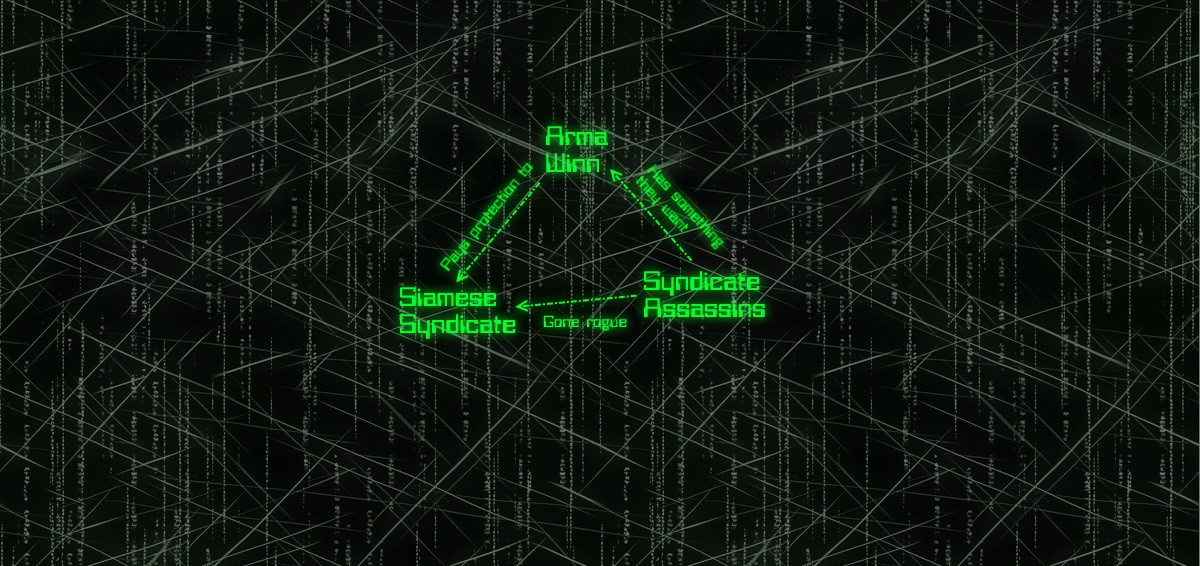
That gives us a really basic story: Arma Winn pays her protection money on the regular, but Syndicate Assassins are coming after her anyways. Plenty of ways to get PCs hooked into this story via connections or, hell, maybe having one or more PCs there for the first hit attempt. We could even take a lead from the plot map example in the book and have Arma already dead as the story starts. Personally, I wish the book spent a little more time unpacking the idea of killing a connection offscreen before the game starts and what that means for characters linked to that connection, but oh well.
Now it's time to start getting the rest of the connections involved. Remember how during character creation players could hit up their connections for a total of two favors each? This is where that potentially comes back to bite people in the ass. The first time a player calls on a connection for a favor, we put their name on the plot map--not connected to anything, just on there, waiting to be linked into the whole sordid mess. The second time a connection does a favor, we draw a connection between their name and another node on the plot map. It doesn't have to be a node that's part of the larger conspiracy--you could, for example, link two connections together and wait to see how they hook into the plot later. Here we want to be looking for ways to get some personal stakes in for the characters. Look at their relationship adjectives with connections and each other. Look for instances of two PCs having the same connection, and look for ways to make that connection not okay with the status quo (what Apocalypse World terms "PC-NPC-PC triangles"). We want reasons for the protagonists to not just get involved, but to get angry.
(The rules are silent on what happens when a connection is already on the map as part of a plot seed; I'm going to assume they're connected enough and not start adding more links for now.)
Example Plot
Looking back at our character creation example and the favors called in for gear, we've got the following:
-
One
shark
favor from Arma Winn
-
Two
shark
favors from Adrienne Chao
-
Two
fix
favors from January Jade
-
One
fix
and one
splice
favor from Pen Re
Arma's already on the map, so we'll skip her for now--but if we had a different node in our plot map we'd add her name floating out there on the plot map somewhere. Adrienne, January, and Pen Re are all getting added to the map and connected to other nodes. This is clearly a pretty involved conspiracy! We can do these in any order, really--I usually wait till all the favors are called in to start adding new nodes, just to give myself more options.
The first thing I'm thinking is that these Syndicate Assassins are all cybered up, so somebody had to install those modifications. With only one connection on the board who can do that, I decide that Pen Re installed the Assassins' cybergear--and moreover, it's the same experimental tech he put in Hattori years ago. I don't know who he's taking his orders from, but I feel like this could be a great character beat for Hattori and his respectful relationship with Pen Re.
Now I'm going to put January Jade and Adrienne Chao on the map together, but not yet connected. January runs the smuggling and gun running trade in Lowertown, and I'm betting the Syndicate isn't too thrilled about that. I could make the connection there, but given that both Peter and Hattori have relationships with both of them, I think this should be more personal. I connect January to Adrienne and say they're currently embroiled in a low-grade turf war. Nothing openly violent yet, but pressure's being put on both sides.
Finally, Adrienne needs her own connection, and this time we'll go with the obvious and say the Syndicate is pressuring her to deal with the January problem. So, after character creation, our plot map looks like this:
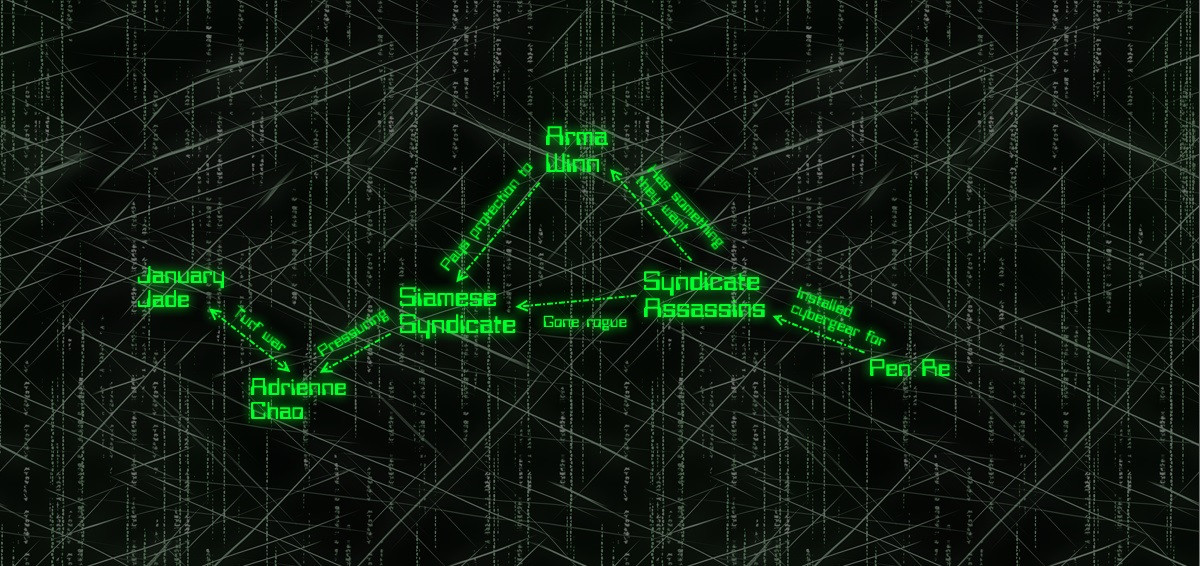
And with that we're ready to start playing. We know a fair bit about what's going on--a schism within the Syndicate, something important Arma Winn has, a turf war in Lowertown--but we don't see the forces moving behind it all. That's fine. In fact, it's good--it gives our characters plenty of avenues to pursue.
Once the game actually starts, the plot map really starts to come alive. As the PCs try to figure out the mystery, they're going to go to their contacts for information. What does Dok Petrov know about advanced black-market cybernetics? Can Adrienne tell them anything about the Syndicate hit squad? Somebody out there knows what's going on, and if you shake the right trees hard enough, something interesting is bound to happen.
Remember how connections have tables with links to other plot nodes? That's where this comes into play. During gameplay, when a PC goes to a connection with a question, you roll on that table. (The table has two columns--one for unconnected characters who aren't yet attached to anything else on the plot map and one for characters with at least one connections. In other words, connections have different leads the deeper they get enmeshed in the plot.) Add that new plot node to the map and connect it to another node--usually the one the PC was asking about--then roleplay the connection spilling rumours or information or whatever. Again, if the nature of the question obviously implies a certain answer, you can just pick a node rather than rolling. Tools not rules. The plot map works for you, not the other way around.
The one exception is if the node that came up is already on the plot map. Then you draw a link from that node to the connection . Now the PCs have stumbled onto a part of the plan their connection is directly involved in. It's totally cool for connections to lie to and mislead PCs, as long as every lead actually gives some new information (even if it's just the connection acting suspicious).
These connection-based scenes will usually make up the first half or so of the game, but eventually the plot's going to congeal and shit's going to start happening--the PCs shift from "what's going on" to "what do we do about it?" The next chapter is going to be chock full of advice on that, but for now let's wrap up with one final example plot map.
Example Plot
Let's say that the game has started and Arma Winn has just narrowly survived an attempted hit. She shows up at Peter's coffin apartment in the middle of the night, bleeding and seriously freaked out, and tells him what happened. She shows him a knife one of them threw at her, and Peter immediately recognizes it. It's a traditional knife used in awud mied, a Thai knife-fighting style. Arma swears up and down that she's paid up on her protection money, so Peter sets out to ask Adrienne Chao why a Syndicate kill squad came after Arma. I have no real strong idea for why, so I roll on Adrienne's connection table and I get a 6, which on her Connected table indicates a SecTec Complex Team ("Private security hired to guard and patrol corporate facilities," threat. Huh. Wasn't expecting that. Well, Peter's kind of asking about both Arma and the Assassins--might be cool if there's more to Arma's story than meets the eye. I connect the SecTec team to Arma Winn with the note "guarding AllPawn." Adrienne deflects Peter's question about the rogue assassins--she doesn't want him to know how out of control things are--and says "The real question you should be asking is why a SecTec Complex Team is guarding a grubby little pawnshop in East St. Paul." The plot thickens.
Once Peter leaves her office, Adrienne pings Hattori over the Interface. She's got surveillance cam feed of the hit attempt (don't ask how), and she wants his opinion. Scrubbing through the VR holographic projection, his onboard systems note reaction times, accuracy, coordination--these guys were a heavily-linked cyber unit, basically almost one mind operating four bodies. That's very emphatically not Syndicate style--the family looks down on cybermods more invasive than a headjack as debasing. Good for the hired help, maybe (no offense, Hattori), but not for the family's elite. (This BTW is a bunch of bullshit I'm spinning purely on the basis of Adrienne not having any implants except a headjack.) Hattori calls up Pen Re and asks him who's moving that kind of heavy-duty illegal cybergear these days. I roll a 3, which nets me "Project Rejuvenation," an ecological activist group that monitors and protests corporate action. It's a stretch, but they sound like the kind of people who might be into a "one world consciousness" kind of ethos, and since the Metroplex is on the bleeding edge of cyberinnovation we'll say that Project Rejuvenation is a bunch of activist engineers, and they pioneered the idea of shared-consciousness implants. Pen seems nervous, distracted--he's sure as hell not going to admit he doctored these guys up, but he's got to reveal something as a contact, so he points Hattori at the green freaks and hopes it doesn't come back on him.
Meanwhile, Sophie's heard about what happened and, since she's dependent on Arma Winn, decides she can't risk losing her meal ticket. She doesn't really know anything about the mob or underworld turf wars, but she knows Dok Petrov dabbles in less than legal activities, so she calls him up on the Interface and asks if he knows who'd want to hit AllPawn with that kind of firepower. I roll a 1, which gives us January Jade. Normally I'd put her on the map and link her to Alma, but since she's already linked to the plot, we have instead stumbled across Dok Petrov's connection to January. We add him to the plot map and connect him to January. We'll say he's been selling her illegal cybertech to cover his crippling gambling debts. He's not about to admit what he knows, and he gives her the brush off. It's obvious he's hiding something, but just before he drops the call, he gets a page from his secretary informing him that "Ms. Jade is on the other line." Tres suspicious.
Anyway, after a few rounds of investigations, our plot map looks like this:
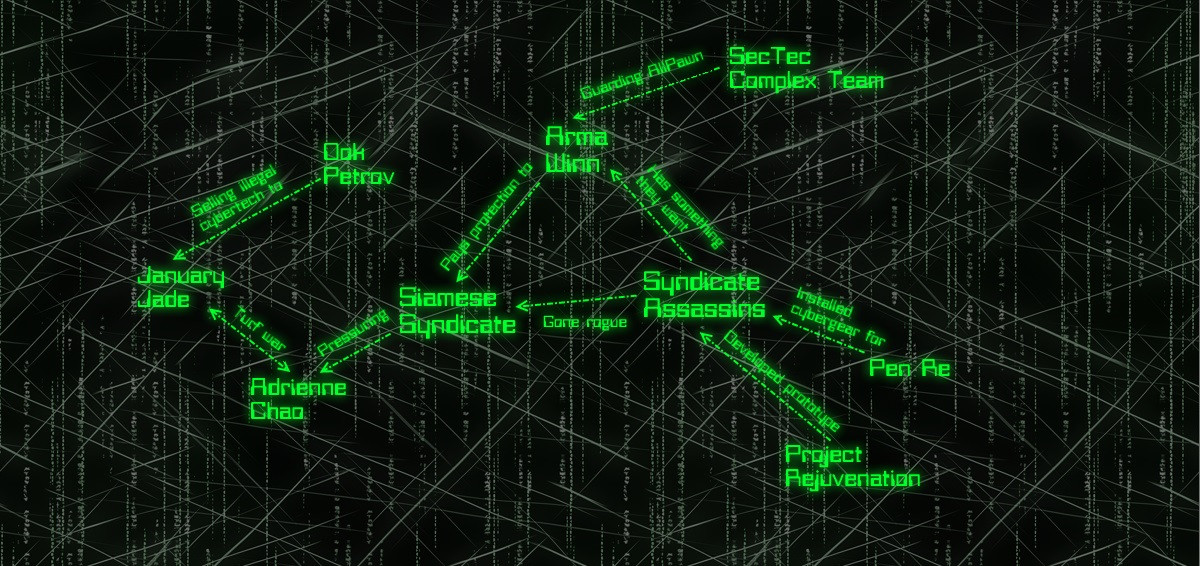
Probably needs a few more investigation scenes to really get a handle on what's going on and what's a red herring, but in the meantime we probably want to consider what our still-faceless antagonists are up to and have them take some action in response. But we'll cover that in the next chapter....
Pacing a plot map's development is key to keeping the game engaging. Typically you'll want to let the players add a few of their connections, plus maybe one node apiece on top of that, in the first session, then start forcing them into actions rather than investigations. Also, these plot maps are really geared toward roughly stand-alone novel sized plots--maybe three to four sessions worth of investigation. More than that and it starts to get too crowded. Usually if that happens, you've got two options: expand to a new Transmission, or pick three "loose end" nodes that didn't really get wrapped up during the story and link them together to create a new plot seed. You could also just update the Transmission, maybe inventing new connections, threats, and factions as old ones serve their purpose and die or change.
When you want to add a new Transmission to your story, the first thing you do is roll a single node from the new Transmission's master table and connect it to a node on your plot map. That'll yell you how the new city's involved. Now, since PCs from the Twin Cities probably don't know many lowlifes from the LA Sprawl, they're gonna need some introductions. That's where connections come in. Each connection knows one connection in the new city--when a PC asks for an introduction, you roll a die on the "Connections" column of the new Transmission's master table. The player adds the new connection to his sheet, and we add the connection to the map.
And that's it for plot maps. I've got to say, it's one of my favorite story-generation mechanics in a game like this--sure, if you go purely by the dice you might end up with some weird connections, and sometimes you can end up with plot holes or weird red herrings, but hey, even Raymond Chandler never figured out who killed the chauffeur in The Big Sleep. The connection mechanic is especially brilliant--I love that the more screen time you give to a connection by calling on them for information and favors, the more likely they are to have been the bad guy all along. It's a wonderfully noir conceit, and modelled brilliantly.
Next time: Instigating shit.
Instigation
Original SA post
Are you guys ready for more TechNoir? I'm ready for some more TechNoir!

When in doubt, have a man come through a door with a gun in his hand.
Now that we've learned how to create characters and plot maps,
Instigation
is chock full of GM advice on how to bring the two together. It's pretty straightforward, so we're just going to hit the high points.
The GM's job is to facilitate play. That means all the things you'd expect in a tabletop RPG: Setting scenes, playing NPCs, all that jazz, but a big part of the TechNoir GM's job is to
push toward contention.
Remember, if the PCs aren't regularly getting beaten bloody, suspended from the force, and/or wrongfully framed for heinous crimes, they can't improve their stats and they lose effectiveness in the game. Now, plenty of times they'll follow up on leads like a terrier with a bone, but the GM needs to always be thinking about what this tangled net of factions, connections, and threats are doing and how they're reacting to the PCs' meddling. It's okay for the GM to interrupt statements of player intent with surprising new developments--encouraged, even. Also listed among the GM's duties is one of the most important pieces of advice in any tabletop RPG ever:
TechNoir posted:
End the scene. As soon as the characters have done what is most important at this time in this place, cut to the next scene.
Fuck yeah, pacing.
All through this chapter we get a running example of a GM running a game for three PCs in the LA Sprawl Transmission. The first example is one I really wish the book would unpack more, because it shows drawing a PC into the mystery by having one of her contacts murdered before the game even starts. Which, I mean, yeah, it's a classic hard-boiled plot opener, but given that connections are supposed to be major sources of help and information it would have been nice to have a bit of discussion about how something like this can kickstart the plot without screwing players over. Something like autopsy reports or CSI work counting as leaning on him for information, at least.
Anyway, a good, strong opening scene is critical to a game like this, and GMs are encouraged to pull out all the stops. Drop your best hard-boiled description, layer on that grimy dystopian cyberpunk aesthetic, really make them feel it. Give them one or two plot nodes they don't know about yet--and not in a vague, rumor-has-it kind of way. Shove it in their faces. If you've got an event like an assassination or a catastrophic accident on your plot map, have it happen right in front of them. If you've got an object, have someone drop it in their lap--ideally right before uttering a cryptic warning and keeling over dead. Feel free to give the spotlight to one or two characters here--mutual connections should get them all involved pretty quickly.
Subsequent scenes are easier to set, since usually you'll be responding to player actions. Still though, don't be afraid to respond to "I want to go check out that Pai Gow parlor" with "Cool, but while you're en route, an armored limo pulls up and a cybered-up gorilla in a tuxedo tells you to get in if you know what's good for you."
Unlike dungeon-crawling murderhobos, hard-boiled investigators typically work alone. That's all cool, just keep the scenes snappy and alternate a lot. We get some pretty standard advice on motivating characters via money and relationships, but it's the section on "Evidence as Motivator" that's most relevant. Basically, if the discovery of a new plot node doesn't introduce new drama and shift the playing field in some meaningful way, you're doing it wrong. We'll spend the rest of the chapter breaking down all the different kinds of plot nodes and finding interesting ways for them to be connected, but you should always be looking for ways to introduce drama and conflicting agendas.
The flip side of that is: don't introduce unnecessary friction to these reveals. This goes back to the "you only roll against other people" rule, and correlates to the rules in systems like GUMSHOE that say "if not finding this information leads to nothing interesting happening, just give them the information." When they search a crime scene, they don't have to roll Notice; if they're conducting an autopsy don't make them roll Treat, etc. This is especially true of connections: a PC's connections will always give her something. It may not be the unvarnished truth, but it's always something to move the story forward. (The flip side of that is that if you're trying to get the real truth out of a connection or you're leaning on a connection other than your own, that's contention and it's time to break out the dice.)
The rest of the chapter devotes a page to each type of plot node, how to use them in the story, and some questions to ask yourself between scenes to prompt drama. Each page also cross-references with all six plot node types, giving you two or three questions you might ask yourself to help figure out a connection between the nodes. For example:
TechNoir posted:
FACTIONS
Factions are just the kind of faceless institutions that independent-minded
protagonists are likely to get on the bad side of. Given time, one party is
going to do something the other party is absolutely opposed to.
- Have factions be up to something. They’re run by people with agendas.
Agendas at odds with protagonists, connections, and other factions.
- Of course factions involve a lot of people. There can be more than one
agenda within any one institution. Create some infighting.
- Factions have resources at their disposal. They can hire connections,
threats, smaller factions, and even protagonists to further their cause.
CONNECTIONS
Does the faction employ this connection? Or is he the one that got away? Do they have dirt on him they can use for blackmail?
EVENTS
Has the faction planned this event? If not, were they still aware it was going to take place or has it taken them by surprise?
FACTIONS
Is this faction in alliance with another? Is one a false front or a sleeping backer for the other? Or do they wage shadow wars against each other?
LOCATIONS
Is the faction headquartered at this location? The site of future expansion? Is it where they’ve buried some secret they’d rather not let anyone find out?
OBJECTS
Did the faction produce this object? Is it a technological innovation of their own design? If it gets in the wrong hands, does it reveal their secrets?
THREATS
Has the faction assembled this threat? Are they a sanctioned arm of the faction’s authority? Did they escape the faction, taking inside secrets with them?
And that's it for Instigation. Short, sweet, and to the point. So let's follow some of that GM advice and move toward Contention.
Contention is the game's term for characters acting against other characters--your fistfights, interrogations under hot lights, and what have you. It's not quite a task-oriented resolution system or a goal-oriented one; the best I can describe it as is a drama-oriented system. The game doesn't care about picking locks, searching for hidden doors, or staking out a nightclub. In fact, it gives us three very simple rules for stuff like that:
Will the action lead toward contention? Are there guards behind the door? Will their suspect actually turn up at the nightclub tonight? If yes, then the action happens. Easy peasy.
Will the action lead away from contention? Does the door lead to an empty room? Is their suspect currently in Singapore? f yes, the action still happens, but you gloss over it quickly and move on.
Will the action avoid a contention? If they get through the door, will they avoid the security patrol? If they stake out the building, will they miss the goon squad that's going to their office to toss the joint? In that case, yeah, you can deny the action. Don't be a dick about it or anything, just say "so yeah, you're about to do that when suddenly..." and grab the dice. I call this the "Men With Guns" rule.
So, rolling dice. We've covered the basics in the first update, but I'll re-post them here as a refresher:
TechNoir uses three colors of dice: white dice are action dice . They represent training and innate skill--when you try to do something, you'll roll a number of action dice equal to your rating in the relevant verb: Coax to fast-talk somebody, Hack to infiltrate their network, etc.
Black dice are push dice . They represent extra effort or a technological edge. You've only got a limited pool of these, but you can add one to your roll for every relevant adjective, object, or tag you've got. After the roll, you can spend them to make the action more effective. Much like Fate Points in Fate games, push dice are the main driver of the economy of TechNoir , and we'll cover what a great system this is in a later post.
Red dice are hurt dice . They represent injuries, inconveniences, and all the other little distractions that make you less effective. For every negative adjective that might hinder your action, you add a hurt die to your roll.
Once you've got all your dice assembled, you roll them. First things first, look at your hurt dice. If any of them are showing the same number as any of your action or push dice , those dice go away. Gather up all your hurt dice , plus any matching action or push dice, and put them aside. Now look at your highest-showing die remaining: that's your action's result. If you have more than one die tied for highest, add ".1" to your result. So, for example, a single 5 gives you a result of 5, three 6s gives you 6.1. If your result is higher than your target's rating in the relevant verb , congratulations! You can put a new adjective, either positive or negative, on the target. If you have any push dice , you can spend them now to make that adjective more severe and/or stick around longer.
So, adjectives. We already know they can be positive or negative; they can also be fleeting, sticky, or locked. Fleeting adjectives are the default for an action; if you don't spend a push die that's what you get. They only last as long as whatever's creating them does, and you can try to get rid of one in the same scene you got it. Otherwise they go away at the end of the scene. Exampled might be grabbed or intrigued.
Spend one push die and you can make an adjective sticky. These are more serious--actual injuries and lasting consequences. They don't go away until they get some kind of treatment--maybe some time with the RoboDoc, maybe a nice long advice session with your favorite bartender, or maybe a corporate PR campaign to clean up that image. Maybe busted (leg) or infatuated.
Two push dice makes the adjective locked. For the most part, these guys are permanent. You can get rid of negative ones with advanced cybernetics or similar serious personal alterations, and positive/relationship adjectives can be overwritten (for example, when you find out your partner's been working for GeneCorp all along). Examples might be severed (leg) or obsessed .
Unlike a lot of storygames, or even more traditional games with narrative elements like Fate, TechNoir doesn't pre-build stakes into conflicts or have a fixed "win/lose" condition. All parties involved should state what their desired outcome is so there's no miscommunication, but goals can shift and evolve as the scene does, and the scene's over when everybody agrees it's over. For example, grabbing a suspect and tossing him in the back of a van might require that you first lay hands on him (putting grabbed as an adjective), then pick him up ( carried ), then finally toss him in the van ( contained as a sticky adjective, maybe). On the other hand, flirting that same suspect into taking you back to his flat might just require a single sticky infatuated adjective--if you're his type.
The game calls this common-sense approach your "vector," which is just a fancy sci-fi way of saying "your actions and adjectives have to make sense." If you don't have any kind of computer, you can't very well Hack things, and unless you're fighting John Carpenter's The Thing you probably can't apply severed as a fleeting adjective, etc. This can also influence the fiction of the scene: To continue that example of black-bagging some mook, maybe if you had strong cyberarms you could make a case for just grabbing the guy being enough. Likewise, sometimes you won't get what you want in one scene--sometimes you'll tag somebody with a sticky adjective and that'll carry you through to the next scene (the example in the book is getting a gang punk pissed off enough that he beats the crap out of you and takes you to his boss).
So, some additional rules: If an action's not being opposed (usually you're putting a positive adjective on a friend), you can skip the rolling and just spend your push dice. If it is being opposed, the target can discharge push dice to invoke adjectives or tags to increase the target number of the action.
(Here I should digress to explain spending vs. discharging push dice . See, push dice are kind of like mana cards in Magic: The Gathering. When your turn starts, you have all your push dice available. Using them in your roll, or using them to increase the target number when somebody comes at you, discharges them. At the end of the action you set them aside, but you keep them and when your turn comes around again they refresh. Spending means you actually hand your push dice over--players to the GM, the GM to the player an NPCs is acting against.)
Removing or replacing adjectives works basically the same way--with the caveat that a lot of fleeting attributes can be cleared with an unopposed action. If you're prone , for example, all you have to do is spend an action getting to your feet.
You can also target multiple characters if you have an adjective or equipment tag that makes sense. A gun with burst fire lets you shoot multiple dudes, being fast lets you outrun a whole bunch of people, etc. Just discharge a push die and roll--but if you want to make the adjective you apply sticky or locked, you have to spend push dice for each target separately.
If there are more than two people involved in a contention, you just alternate "sides," but there's no initiative system to speak of. As long as it's a good give and take between PCs and NPCs, you can take turns in any order. Once everybody's acted, the next round begins and you keep going until the scene is resolved.
Finally, let's talk about lethal consequences. At the end of any scene where PCs got hurt (after any fleeting adjectives are cleared), each player totals up the number of negative adjectives that describe physical injuries and rolls that many hurt dice. If one die shows a 6, the character is dying. She still has agency and can take actions, but she has dying as a sticky negative attribute until she gets treatment. If two or more dice show 6s, she's dead. Kind of. See, dead is a locked negative adjective, but there's still time to rush the character to a cyberdoc and get her borged up, just like with any other locked negative adjective. It's only if the roll to implant that stuff fails that the character is for realsies dead.
Hey, speaking of healing, let's wrap up the rules by talking about Restoration. We've talked a little bit about removing adjectives in the sense of getting rid of fleeting ones, but sticky and locked adjectives generally require a scene to themselves to get rid of. The rules are pretty much the same, with one exception: The person rolling to remove the adjective totals up her own negative adjectives and her patient's when assembling her dice pool. If you're operating on yourself, you count your adjectives twice. See a doctor, son, goddamn.
Healing is also how you improve your Verbs. See, whenever you take an action with a verb and you fail, you mark a check box next to that verb. When you try to get rid of an adjective, first you pick a Verb you want to try to improve. If one of the hurt dice comes up higher than your rating in that Verb, increase it by one. Doesn't matter whether you heal up or not, hard-boiled protagonists learn from pain.
And that's it for TechNoir, mechanically speaking! Next time we'll review some Transmissions, then we'll finish off with MechNoir.
Transmission
Original SA post
The sky above the port was the color of a television, tuned to a dead channel.
Okay, one last post and we should be set to wrap up Technoir. First we'll close out the core rulebook by talking a little bit about each of the three Transmissions included, then we'll talk about the Kickstarter-unlocked Transmissions, and finally we'll talk a little bit about MechNoir. Let's do this.

The Los Angeles Sprawl
It's big, it's smoggy, and it covers a knife-edged city of broken dreams and lost souls with a shiny veneer of glitz and glamour. It's the Los Angeles Sprawl, and after decades of being Vancouver's poor cousin, it's back on top of the entertainment industry. The hot thing these days is Immatrix Experiences--total sensory immersion streamed directly into your nervous system, letting you be the heroes of your favorite stories. And if you don't think there's a seamy side to Immatrix filmmaking... well, you haven't read much hard-boiled fiction. Or interacted with human beings all that often.
In the L.A. Sprawl, you might find yourself mired in a mystery involving:
-
Pi Larson, Beverly Hills' cybersurgeon to the stars
-
A High-Speed Pursuit, when a fugitive on a Switchblade is chased by Starlight Watch through the freeways of L.A. (Maybe it's you!)
-
The Church of Astroogy, an
 entirely fictional
entirely fictional
 secretive celebrity cult
secretive celebrity cult
-
Saito Arena, the proving ground for the recently-legalized blood derby

-
The Needle, a syringe in a leather case containing several milliliters of the Orion Pathogen.
-
Tom and Dick, a pair of hitmen. Where's Harry?


Singapore Sling
Boiling hot and humid as a slap in the face with a wet towel, Singapore is a city of sharp divides. The upper class flaunt neo-Victorian fashion and live in towering arcologies, while the rest struggle and scrape to make enough money to pay the annual "don't get deported forever" tax. The Port of Singapore is its whole own thing, a massive, mostly-automated facility that handles millions of tons of shipping every day. The people who live dockside are treated as nonentities--even entering the walled city without a Citiplant or a temporary visa will get you killed. The "Sling" part of the name comes from the 50 kilometer railgun built by the Zenith Group to cheaply and efficiently launch cargo into orbit.
In the Singapore Sling, you might have to deal with:
-
Suey Chow, brash smuggler and captain of the
Flynn's Revenge
, barely drinking age
-
The Anatomist, a serial killer who records and posts live dissections on the Interface
-
GTFOFT.org.sg, an interface hub for nativist hooligans where recordings of refugee beatings are popular
-
The 10% Club, a scummy dockside bar where having a Citiplant gets you rumbled and tossed in the harbor
-
DRMDMA, a brain implant that directly stimulates the pleasure centers, but only when activated with single-use DRM codes
-
10th Horse, a company of elite chauffeurs and bodyguards for the upper crust

Kilimanjaro Ring
It rhymes with Singapore Sling, and it's also about an earth-to-orbit construction project! In this case, Steiner Technology is building an earth-to-orbit "beanstalk" on the peak of Mt. Kilimanjaro, while a mile below the peak a sealed ring city provides all the comforts of sea-level living. Local governments are keeping a tight hold on land rights and other permissions, and while nobody much likes to admit it, the Beanstalk is behind schedule and massively overbudget. Throw in extremist groups, media sensationalism, and the inevitable exploitation of workers on a project like this, and you've got a volcano ready to blow.
At Kilimanjaro, you never know what's going to happen next, but it might involve:
-
Liesbeth Van Otterloo, a street doctor in Lower South Bend
-
Beanstalk Bombing, where a terrorist act kills a bunch of people and sets construction back by months
-
The Union of Summit Workers, a newly-formed union for the Beanstalk construction crew.
-
The Exchange, a global marketplace both physical and virtual, made famous by the Immatrix thriller
Ring of Woe
-
A severed cyberhand, once attached to a cartel middleman
-
A Frequency Assault Team, child hackers hidden all around the city who perform coordinated strikes

Hong Kong Special Administrative Region
Home of the fastest Interface connections on earth, Hong Kong is a polluted nightmare of airborne toxins and poison rain. Climate-change driven typhoons and pollution from mainland factories has rendered the city pretty close to uninhabitable--at least, above ground. The rich and powerful, referred to as the Clean, can afford the genetic and cybermods to live above ground, but everybody else lives underground and makes due with filter masks and coated rain-gear. Used to be that when the Air Pollution Index dropped low enough, the whole city would erupt into spontaneous festivals, but there hasn't been a safe day in years.
Hong Kong stories might feature:
-
Woo Fat, a retired Triad enforcer who now produces Immatrix movies. He's fond of light-hearted comedies.
-
Exposure, when five Clean athletes die after a hacker disables their implants during a cricket match
-
The Bank of China, a financial institution whose "investments" are the main way the mainland influences local affairs.
-
Bottoms Up, a hip cantopop club in Kowloon
-
Baba Yaga, a Russian-produced derivative of meth used as a sensation heightener by Immatrix performers
-
The Outstanding Five, street urchin pickpockets led by a ruthless, elderly crook.

Twin Cities Metroplex
We've already seen a bunch of this Transmission during our character creation and plot-map building phases. It's at the cutting edge of cybertech, but it's suffering from a combination of the harshest winters in decades and a sudden, massive spike in unemployment. Daedalus Innovation, the main employer in the area, just laid off 80% of its workforce and replaced them with robots. The huge arcology they built to house those employees is being renovated into a pleasure palace for the obscenely rich as homelessness rates soar, and all the while the air is getting chillier.
What's going on in the Twin Cities? Well, you might want to look into:
-
January Jade, a smuggler and gun dealer in Lowertown St. Paul
-
The Big Blizzard, an overnight storm with record-low temperatures and record-high snowfall
-
Cybertronic Systems, an upstart corp looking to challenge Daedalus' market dominance
-
The Pig's Eye Tavern, a seedy bar in St. Paul
-
The Bag, a suitcase full of cash
-
The Bleeding Razors, a biker gang out of North Minneapolis.
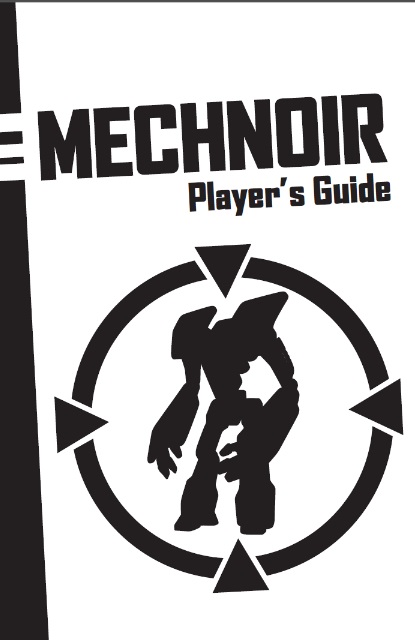
MechNoir posted:
Life on Mars...
TECHNOLOGY
Massive walking machines called “rigs” were engineered to carve into the red husk of Mars and construct new colonial structures for those who fled an Earth that didn’t want them anymore. Only practical in low-gravity environments, these mechanized giants are piloted by specialized riggers who use cerebral inputs to command the rigs as extensions of their own body. But when the colonies turned against each other, these rigs were retrofitted with weapons and utilized for their destructive capabilities in a war that spans the red planet.
ENVIRONMENT
Mars has a toxic atmosphere, horrific sandstorms, and less than half of Earth’s gravity. It’s not exactly easy for anyone to live here. This forces colonists to huddle together in the sealed domes and underground structures the rigs built. Even inside, farming is less than sustainable and pollution is a growing danger as the ability to recycle or replenish Earth’s imported resources is limited.
SOCIETY
The various communites that live on Mars came to escape religious and political pursecution on Earth. Now far from their oppressors, it didn’t take them long to turn their disdain towards each other. War has broken out between the planet’s three primary factions: the personality cult of the Shiat al-Raj’a, the Martian Autonomist Union, and the cloned zealots of “The Chosen.” Now the working-class riggers, once responsible for building the colonies, have been called on to be the warrior class that might bring society’s destruction.
MechNoir , you may recall, was one of three extra add-ons promised by the TechNoir kickstarter, and sadly the only one ever released. It consists of a 16-page player's guide containing new rules, and three Transmissions focused on the giant-robot theme.
The Player's Guide is laid out just like the one for basic TechNoir , with summaries of character generation, connection favors, gear, and rules. Unfortunately, for the most part it doesn't call out the new, MechNoir -specific rules anywhere, which means it's very easy to skim a section you know from the basic TechNoir rules and miss a new wrinkle.
First up we get mech-focused summaries of the nine verbs. Nothing here you don't expect--you use the same verbs as normal when you're driving a mech as when you're running around on the ground.
Next there's a new favor connections can grant: stable. This completely covers the cost of one mech (or "rig," as they're called) or transport ship, including any upgrade you put on it. Just like a shark favor, though, you owe your connection for the loan, and until it's paid off they can compel you to do work for them. With rigs ranging in cost from 19-22 Kreds, this is a pretty vital favor if you want to drive a rig and have, oh, anything else at all to your name.
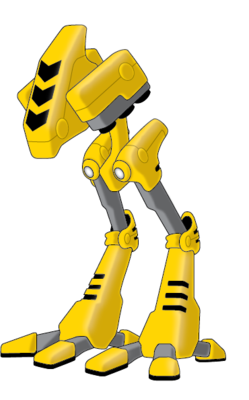
Dancer 38: A high-speed rig designed to get in and out of dangerous territory.
We next get stats and costs for six different rigs, two transports, and a couple of varieties of flight suits. The rigs range from fast-moving, ostrich-legged scouts to mobile drilling rigs converted for combat. We also get a small Aliens -style dropship and a huge cargo hauler for transports. Like vehicles, rigs and transports cost 10 Kreds + the number of tags.
Rigs and transports have some new tags, including armor (which gets special rules a little later), huge (massive and crewed by multiple characters; each crewmember gets an action every round during a contention, but each tag on the vvehicle can only be used once per round, and articulated arms (exactly what it sounds like, your robot suit has arms and hands).
Tucked away in the summary of the contention rules, we find a new option when attacking a vehicle. Instead of creating a sticky or locked adjective, you can spend one push die to disable one of the target's tags, or spend two push dice to destroy it. Either way, that tag can't be used until the rig is repaired. Armor tags give the defending player another option: In lieu of accepting a sticky adjective or disabled tag, she can disable an armor tag instead. Likewise, to avoid a locked adjective or destroyed tag, she can destroy an armor tag. Unlike a lot of tags, vehicles can have the armor tag more than once.
Affecting a giant robot or a huge dropship isn't too easy for one person! Likewise, it's hard for giant robots to focus on one person, so generally the two scales don't interact. Certain vectors can change that, though--inflict a fleeting adjective like boarded on a rig and now you're inside, ripe for some sabotage. Hack their comm system and force the pilot to listen to you and you can make Coax rolls. And, of course, giant robots always have a vector to target multiple person-scale opponents with one action.
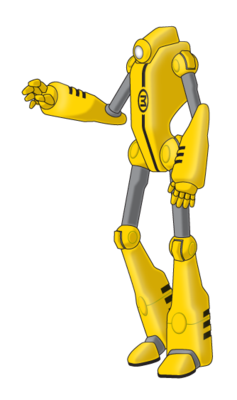
Coyote 5F: A light rig used for stealth and mobility.
Finally, Restoration still works as normal, with Operate or Hack subbing in for Treat when you're repairing a rig's hardware or software. Repairing a disabled tag works just like treating a sticky adjective. To replace a destroyed tag, you have to pay 1 Kred for the parts to downgrade "destroyed" to "disabled," and then you can fix it normally.
(Unfortunately, the Mechnoir transmissions don't have the cool little skyline silhouettes the regular ones do. So have some pictures of robots instead.)
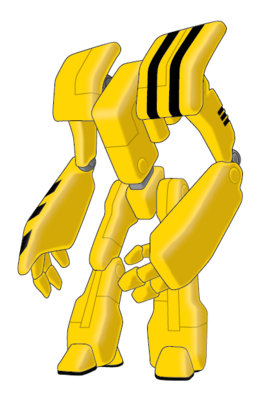
Martian Autonomist Union, Local 10-6
Welcome to glorious Soviet Mars, comrade! The Sixers are a bunch of union boys and girls who overthrew their corporate bosses and, with the help of some genius prodigies in the union, they built an AI called TALLY to distribute the work equally and fairly. TALLY loves to keep people busy, whether that's putting in a fair day's work or blowing off steam at the weekend fights (both bare-knuckle and rigged up). The Sixers live deep underground, and every member's expected to do her share. Loafers don't tend to last long.
Among the Sixers, you might find:
-
Cass Ali, an undefeated rig fighter with a stunningly original name
-
Patch Day, where a software update on TALLY goes live and the AI promptly crashes
-
The Hollers, rumble truck drivers who carry vital supplies and gossip between Sixer communes
-
The Tsar, a defunct orbital cargo launcher shut down by the revolution
-
The Gusev Doozy, a flawless diamond a meter across, in a crater three days from the nearest commune
-
The Kimes, an extended family of gamblers, thieves, scammers, and cannibals. Wait, what?
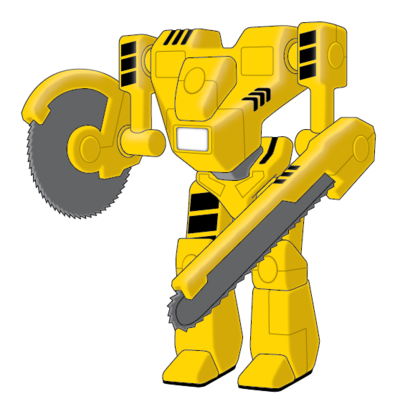
Shiat al-Raj'a
Fleeing persecution and assassination attempts on earth, Raj'a (Peace be upon her) brought her followers to Mars. They've settled in the deepest part of the Valles Marinaras rift, with Qutb Alcazar, Raj'a's fortress, perched above at the canyon lip. But the colony is still dependent on supply drops from the faithful remaining on earth, and a series of purges have left them without enough technicians to keep the colony running. When religious fanaticism and severe deprivation meet, it's gonna be about as safe as when a match meets a can of gasoline.
In Shiat al-Raj'a, you'll contend with:
-
Kay, Ishiwara, chain-smoking chief engineer, armorer, and inventor, and also a former(?) Sixer
-
Redline! Reactor One narrowly avoids a containment breach, but was it an accident or sabotage?
-
The Stargazers, a former UN science outpost forcibly annexed when the Shiat arrived on Mars
-
The Broadcast Studio, a fortified production suite atop Qutb Alcazar's tallest minaret
-
Hadith 2.0, a brooch that records the Mahdi Raj'a's every word for posterity
-
The Coffins, inexperienced shock troops motivated with Sama-soma inhalers
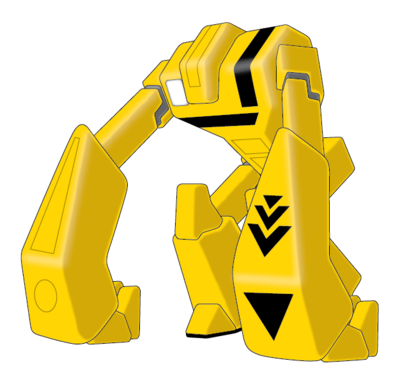
The Chosen
The Earth is irredeemably under Satan's control, brothers and sisters. His scaly hands control every megacorp, every country, every person on the planet. Naturally, the only thing for the faithful to do was to start anew on Mars! With God's grace, the Chosen will remake the Red planet into a new Eden. Already their terraforming projects are bearing fruit, and advanced cloning techniques that cut gestation time down to 5 months have ensured them a booming population. From their main compound of Zion on Olympus Mons, they claim stewardship of the whole planet and preach that everyone born on earth is damned. Not that anyone else pays much attention.
If they don't shoot you on sight, the Chosen might get you tangled up with:
-
Founder Gabriel Cody, the last surviving member of the 144 Founders who led the faithful to Mars
-
Disfellowshipment, in which an entire community is expelled from the faith for "depraved worship"
-
The Deirdres, a controversial community of clones of Dierdra Sterling, who was a stowaway on the Founders' ship
-
Satan's Alley, a desolate canyon home to dust devils that can dismantle a rig in seconds. Not, surprisingly, your butthole.
-
The 8th Seal, a slang term for the chemical sterility treatments all Chosen receive on their 12th birthday. It has the
fallible
tag.
-
The Seraphim, an elite airborne strike team
And that's it for TechNoir and MechNoir! i've got to say I'm not a huge fan of MechNoir. It's not bad by any means, and I really like all three Transmissions, but the "giant robots" aspects feel kind of... tacked on, I guess? Partly I think that's because "giant robots fighting" isn't as natural a fit for hard-boiled detective fiction as "cyberpunk" is. Really, for the most part you could pull the rigs out of all three of those Transmissions and 99% of it would be exactly the same. Still, the Transmissions are really cool, and whether or not you're down with the giant robots they make great opportunities to push a TechNoir game into a bigger sci-fi arena than the typical cyberpunk story. I just kind of wish we'd gotten HexNoir.
Next Time: We continue my streak of reviewing d6 dice pool based games by taking a look at Hollowpoint , VSCA Publishing's game of "bad people killing bad people for bad reasons."